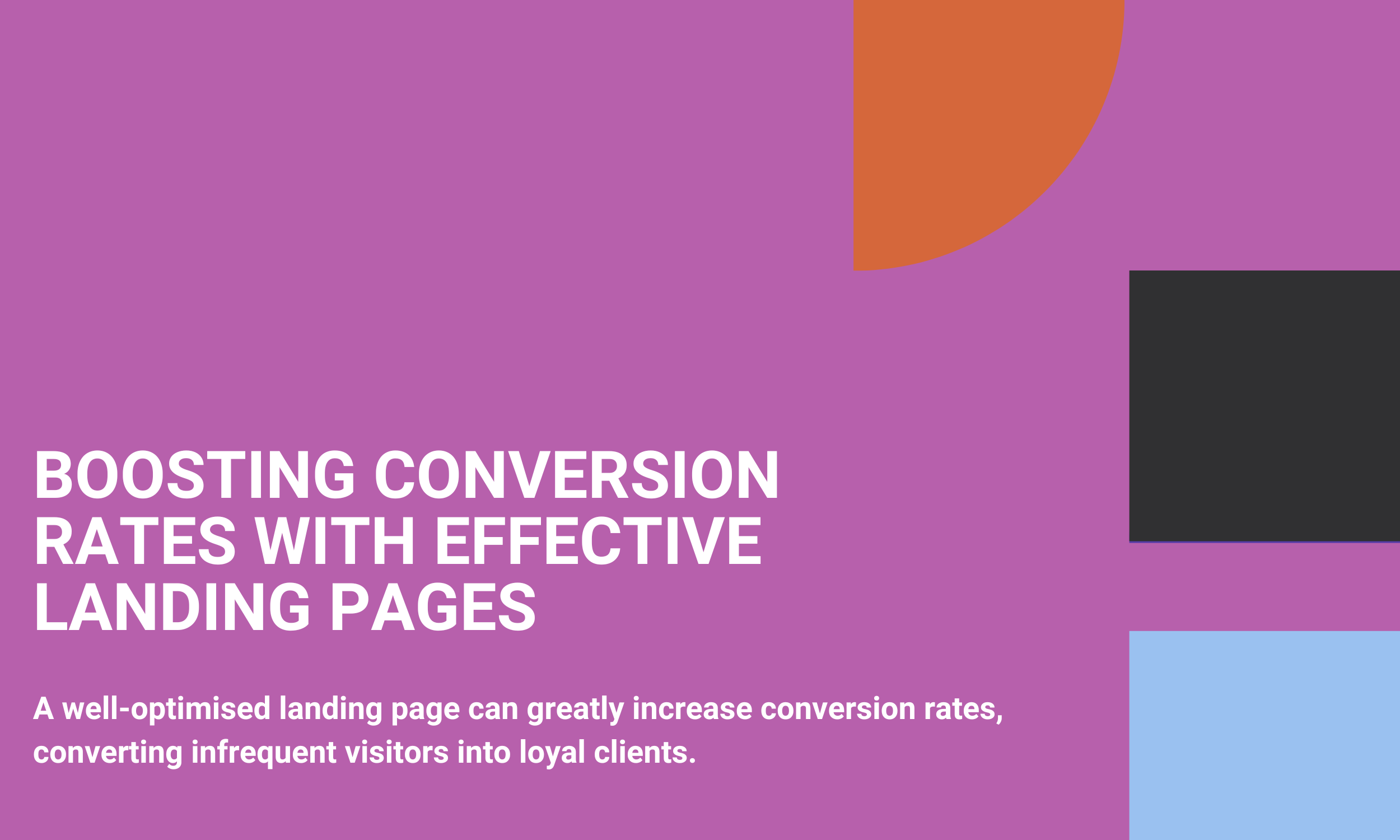Services List
Businesses are continuously looking for methods to improve their online performance. The landing page is one of the most important aspects of this venture. A well-optimised landing page can greatly increase conversion rates, converting infrequent visitors into loyal clients. This detailed guide is intended to educate sales and marketing teams on how to optimise landing pages for maximum conversion rates.

Covered in this article
The Importance of Conversion Rates in Digital Marketing
Key Elements of Landing Page Optimisation
Advanced Strategies for Boosting Conversion Rates
Leveraging Social Proof for Higher Conversion Rates
Implementing Social Proof on Your Landing Page
The Importance of Conversion Rates in Digital Marketing
In this section, we delve into why conversion rates are more than just a number. They are a vital indicator of your landing page's effectiveness and a cornerstone of digital marketing strategy.
What Are Conversion Rates?
In the realm of digital marketing, conversion rates are a key performance indicator. They measure the percentage of visitors to your landing page who take a desired action, such as making a purchase or signing up for a newsletter. According to HubSpot, the average landing page conversion rate across all industries is 9.7%. However, with effective landing page optimisation, businesses have seen an average conversion lift of 30%.
Why Focus on Conversion Rates?
Focusing on conversion rates is not just about increasing numbers; it's about enhancing the quality of your leads and, ultimately, boosting sales. A high conversion rate indicates that your landing page is effective in persuading visitors to take action, thereby contributing to business growth.
Key Elements of Landing Page Optimisation
As we move forward, we'll explore the fundamental building blocks of an effective landing page. From eye-catching headlines to persuasive CTAs, these elements are the linchpin of successful conversions.
Compelling Headlines
The headline is the first thing a visitor sees and should immediately capture their attention. A compelling headline can make the difference between a bounce and a conversion.
Quality Content
Content is king in digital marketing. Your landing page should provide valuable information that solves a problem or fulfills a need for your target audience.
Visual Elements
According to Leadpages, incorporating quality visuals like images and videos can increase conversion rates by up to 30%.
Call-to-Action (CTA)
A clear and compelling CTA guides the visitor on what to do next. Whether it's to 'Buy Now' or 'Learn More', the CTA should be prominently displayed and easy to find.
Advanced Strategies for Boosting Conversion Rates
Next, we'll navigate through advanced methodologies designed to elevate your landing page's performance. Whether it's A/B testing or mobile optimisation, these strategies are pivotal for achieving exceptional conversion rates.
A/B Testing
One of the most effective ways to determine what works best for your landing page is through A/B testing. This involves creating two versions of your landing page with varying elements, such as headlines or CTAs, and then analysing which version performs better in terms of conversion rates.
Mobile Optimisation
With the increasing prevalence of mobile devices, ensuring that your landing page is mobile-friendly is crucial. According to Pollthepeople, mobile-optimised landing pages have a higher likelihood of converting visitors.
Use of Analytics
Utilising analytics tools can provide valuable insights into visitor behaviour, allowing you to make data-driven decisions for further optimisation.
Leveraging Social Proof for Higher Conversion Rates
In this segment, we'll uncover the compelling role of social proof in shaping consumer decisions. From customer testimonials to influencer endorsements, social proof can be a game-changer in boosting your conversion rates.
The Power of Social Proof
In an age where consumers are bombarded with choices, social proof serves as a powerful tool to influence decision-making. According to various studies, nearly 70% of online consumers look at a product review prior to making a purchase. Social proof can come in various forms, such as customer testimonials, ratings, and reviews, or even social media mentions.
Types of Social Proof
- Customer Testimonials: Authentic reviews from satisfied customers can significantly boost credibility.
- Influencer Endorsements: Collaborations with industry influencers can lend authority to your product or service.
- Case Studies: Detailed accounts of how your product or service solved a problem can serve as compelling social proof.
Implementing Social Proof on Your Landing Page
Lastly, let's guide you through the practical steps of incorporating social proof into your landing page.
- Placement: Make sure to place your social proof where it will have the most impact, such as near CTAs or pricing information.
- Authenticity: Use real quotes and, if possible, real names and photos to add authenticity to your testimonials.
- Relevance: Ensure that the social proof is directly related to the product or service being offered on the landing page.
By effectively leveraging social proof, you can build trust and credibility, thereby increasing your landing page's conversion rates.






